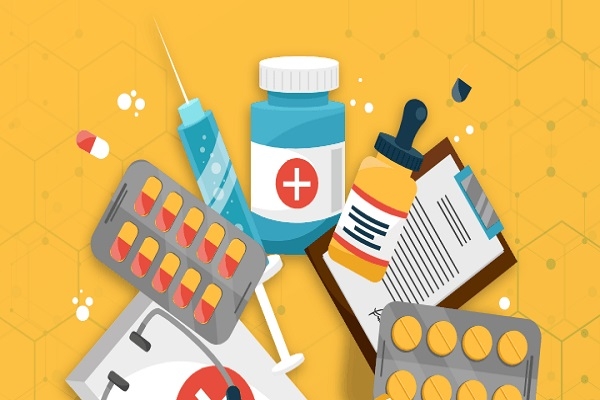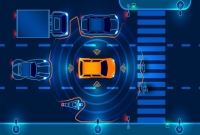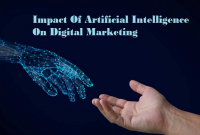
How Internet of Things (IoT) is transforming Pharmaceutical Industry?
- By PRIYA --
- Thursday, 12 Mar, 2020
Developing a new medicine takes an average ten years and requires at a minimum $2.6 Billion, according to PhRMA (Pharmaceutical Research and Manufacturers of America); this enormous price tag includes the failed efforts. On average, one winning solution out of 9 promising formulations makes it through the pharma R&D process. A compound with a difficult recipe or an inconclusive result in clinical trials will tank a pharmaceutical development. In the meantime, the world eagerly awaits pharmaceutical breakthroughs for the diseases that remain uncurable or better solutions for managing chronic ailments.
The Internet of Things, or IoT, can play a significant role in accelerating drug development, streamlining its production, and lowering the R&D cost, as well as improving the administration of medicine to patients. What is IoT? It’s the world of smart devices connected to the internet feeding real-time data to a network of computing engines that communicate between themselves (machine to machine computing), triage the data by relevance (machine learning), and observe patterns to convert them into equations (artificial intelligence). You are surrounded by IoT technology: your smartphone, anything you set in your home with your phone whether the air conditioning system, garage door, outdoor cameras, or the voice of Alexa that comes out of the Amazon Echo box on your kitchen counter.
The ways IoT is aiding the Pharmaceutical industry:
IoT Accelerates Finding the Winning Solution
Clinical tests consume 70% of the time needed for a new medication concept to receive the stamp of approval from the FDA (Food and Drug Administration). These tests must demonstrate that the solution works with high efficacy and is safe to use. Typically, the FDA authorizes the manufacturer to produce the drug for only one specific application: the one that was evaluated in the trials.
IoT can increase the odds of choosing a winning formulation over less favorable ones and help reduce the development cost. Cell-in-a-Chip or Organ-in-a-Chip are tiny laboratory trays created out of the science of tissue engineering that not only enable an experiment but also communicates the outcome of what happened in the chip after the deposition of the pharmaceutical compound. They provide a live, miniature environment that replicates key physiological aspects of the human body with real-time reporting of parameters through a smart interface. The new medical formulation is applied to the chip and the reaction of the live material is recorded with insights into the absorption level of the new formulation, including the impact on multi-organ interactions and whether it alters the condition of the diseased.
For instance, BioLines Laboratory and the University of Pennsylvania worked with NASA to run some tests in space with a lung-bone-marrow-tissue chip to provide more understanding of how the body fights various infections. Other companies target medical applications such as the treatment of the heart, nerves, lung, liver, kidney and more. These capabilities show promising results and the next few years will demonstrate whether these lab-on-chips will adequately replicate human physiology.
IoT Accelerates Clinical Trials
IoT also eases the administration of clinical trials by tracking the health of subjects in their normal environment outside of the research centers where the treatment under evaluation traditionally gets administered. Not only does it lift the obligation for frequent check-ins, but it also broadens the pool of eligible individuals to those who may not have the ability to travel great distances.
Health accessories attach to smart devices and wearable sensors capture physiological parameters and record them in the cloud passively as the person goes about their normal activities. Current Health received FDA clearance in Feb 2019 for a post-acute care AI-enabled monitoring device that is placed on patients’ arm and tracks vital signs from the hospital to the home. Current Health also partners with the pharma industry to enable home monitoring of subjects involved in clinical trials.
IoT Helps Control Quality in Pharma Production
IoT sensors monitor the conditions in the manufacturing process by systematically uploading to the cloud the parameters surrounding the making of each individual item with detailed insights, tracking the history along the chain of events and the source of each element contributing to the recipe. It monitors temperature, humidity, gas exposure, and radiation emission. The AI residing in the cloud may detect slight degradation, predict where the trend may lead, adjust the environment as needed, or trigger an alert that something bad will happen without correction. It can even flag a piece of equipment that may be on the edge to fail or has some abnormal conditions.
One of the greatest potentials that IoT brings to the pharma industry is the ability to track a product from its original compounds to the patient’s home with information of what happens when a bottle of pills leaves the walls of a well-controlled environment and ventures into shipment containers, trucks, pharmacies storage rooms, the patient’s care, and the home. Is the medication exposed to conditions that would alter its properties? In an industrial space with nearly no margin for error, the pharma industry needs to understand the complete supply chain of its products and develop an understanding for each individual patient.
Similarly, each person who takes a medication deserves to know the journey it took to land in their hands. IoT will empower the patient to find where the medication came from and its journey to their home. This will eventually raise the awareness of the spread of counterfeit medications to the general public.
IoT Improves Patient Compliance
One out of two patients doesn’t take their prescriptions as recommended by their physician, according to the NCPIE (National Council on Patient Information and Education). Reasons vary from forgetfulness to the discomfort of side effects. The American Heart Association expects this problem to increase as the population ages. They noted that 24% of people have not picked up their heart medicine within seven days of being released from the hospital. The lack of adherence not only costs lives but it challenges the physician’s ability to care for their patients.
Automated pill dispensers, such as Hero Health, connect to a smart device programmed with the time for the release of the medication as well as setting a digital record of the delivery. Although this lifts the worry of remembering, it does not ensure the pills are swallowed.
In late 2017, the FDA approved Otsuka Pharmaceutical Co., Ltd. Abilify MyCite, schizophrenia and bipolar disorder treatment delivered orally in a digitally tracked pill that is equipped with a sensor that relays to a smartphone that the pill was ingested.
Physiological reactions give a further indication that the treatment works. Wearable sensors can report remotely a patient’s cardiac condition, mobility, and other signs of improved health. AliveCor manufactures KardiaMobile, a medical-grade electrocardiogram device that is a small metallic pad onto which the patient’s fingers rest while the device picks up the cardiac information through the fingers and relays it via blue-tooth to an iOs or Android smartphone or tablet. The Apple Watch can be set to trigger alerts for an irregular heart rate and detects a fall for a user who is 65 or older. The Motiv Ring tracks heart rate and sleep and connects to a mobile phone.
There are numerous applications and means through the IoT to ensure the pharmaceutical industry acquires accurate information and data on how the treatment is affecting patients of all ages.
Conclusion
Internet of Things (IoT) brings a new set of capabilities to the pharma industry that will help reduce development costs and accelerate the speed of producing new drugs for diseases awaiting new solutions. It accelerates the early triage of possible formulations with cell-in-a-chip and organ-in-a-chip devices that replicate the physiological parameters of a human body.
IoT also closes the loop between the physician, the pharmacist, the drug manufacturer, and the patient by tracking in the cloud the patient’s adherence to prescribed treatment. With IoT bringing treatment and testing transparency with the help of sensors and smart devices, the pharma industry can make faster headway on saving more lives and discovering cures and better treatment.






